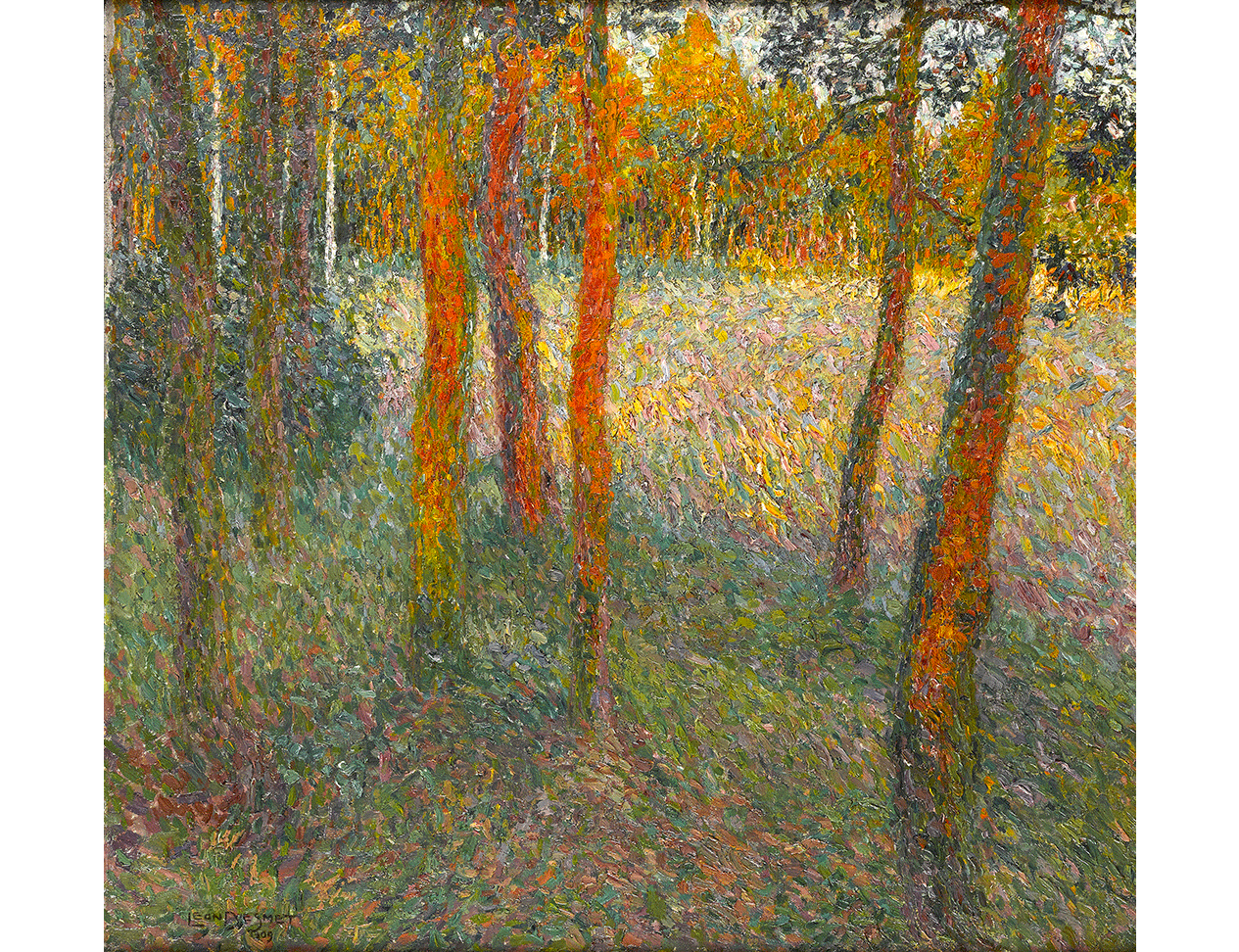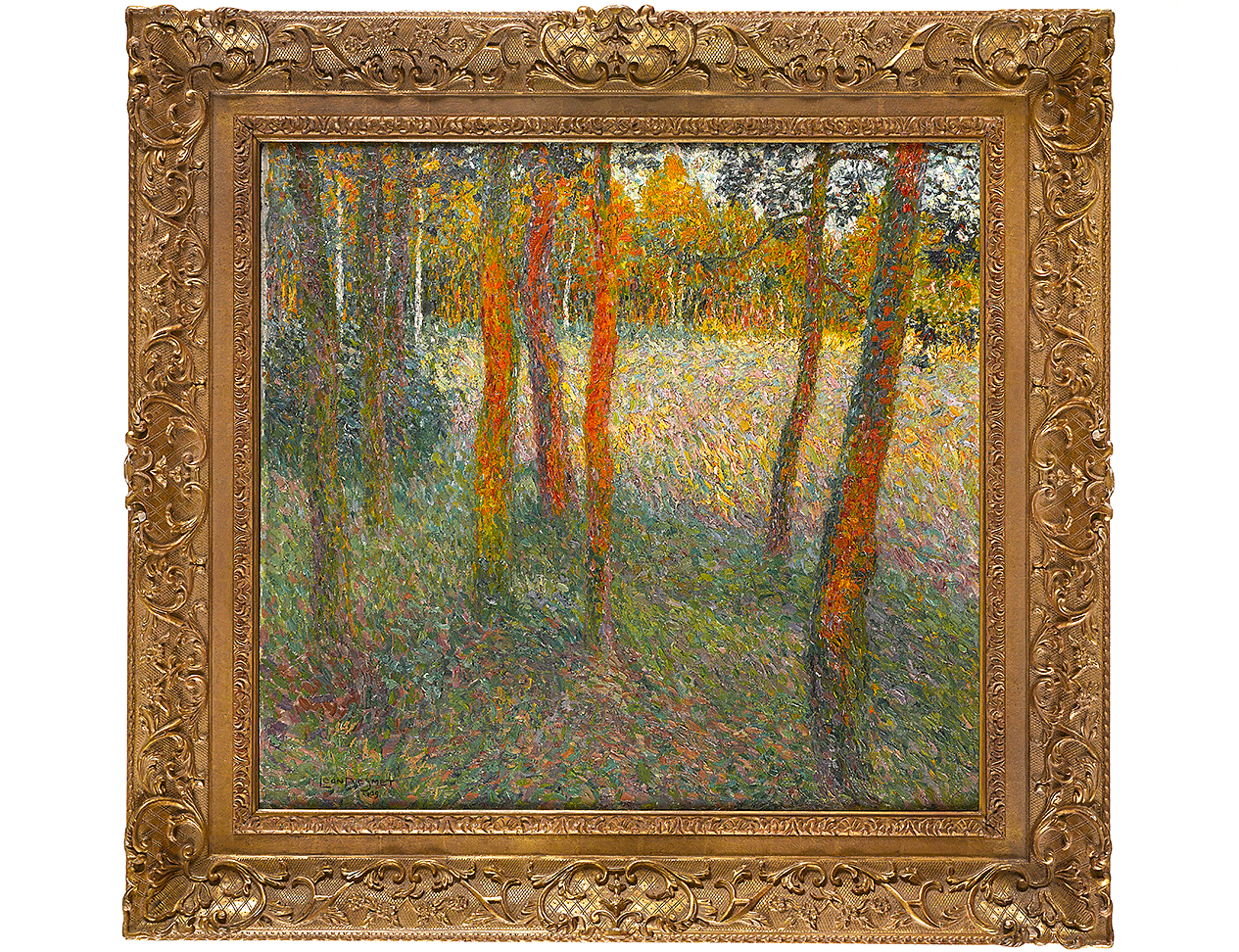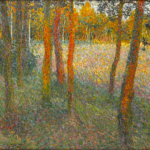Provenance
Sale: De Vuyst, Lokeren, 14 May 2011, lot 111
Private collection, USA
Dating from the period in which Léon de Smet was living in an artists’ commune in Saint-Martens-Latem, in his native Belgium, the present painting displays the influence of French developments in Impressionist and Neo-Impressionist thought on the artist’s work. Chosen to represent Belgium at the Venice Biennale the same year he produced this canvas, de Smet was keenly aware of artistic developments on the Continent. Particularly pertinent to this canvas is the Impressionist fascination with shadow and half-shadow; their infinite nuances of colour and shade. De Smet demonstrates his mastery of the concept in his subtle evocation of the foreground grass, setting the complementary colours of red and green, vermillion and emerald, against each other.
Léon de Smet was born in Ghent, Belgium, in 1881. He received his artistic training at the Royal Academy of Fine Arts in Antwerp, and in 1901 held his first exhibition in the city. He exhibited regularly throughout the 1900’s, in Antwerp, Brussels and Ghent. In 1909, he represented Belgium at the Venice Biennale and the following year his work was included in an international exhibition in Brussels alongside Pierre Bonnard and Édouard Vuillard. Léon was the younger brother of Gustave de Smet, who was also a painter.
In 1906 Léon joined the Second Group of Saint-Martens-Latem, an artists’ colony including the painters Maurice Sys, Frits van den Berghe, Constant Permeke, and his brother Gustave de Smet. His time in Saint-Martens-Latem proved highly influential: it was here that de Smet developed the neo-impressionistic techniques, combining fragmented pictorial surfaces with bold colour combinations, that underpinned his mature style.
De Smet moved to London in 1914; he lived there throughout the war. Though motivated by necessity, de Smet’s relocation had a hugely beneficial impact on his career. The painter began to move in literary circles, whose members included George Bernard Shaw, John Galsworthy, and Joseph Conrad and exhibited paintings in the Royal Academy. De Smet returned to Belgium in 1920 and, throughout the 1920’s and 1930’s, continued to exhibit widely in Europe and America. In 1953 the Museum of Fine Arts in Ghent honoured the 72-year-old artist by staging a large solo exhibition of his work; the gallery now contains a number of de Smet’s canvases. His paintings are also held in the Groeningemuseum, Bruges, the Royal Museum of Fine Arts, Antwerp, and the Indianapolis Museum of Art.













